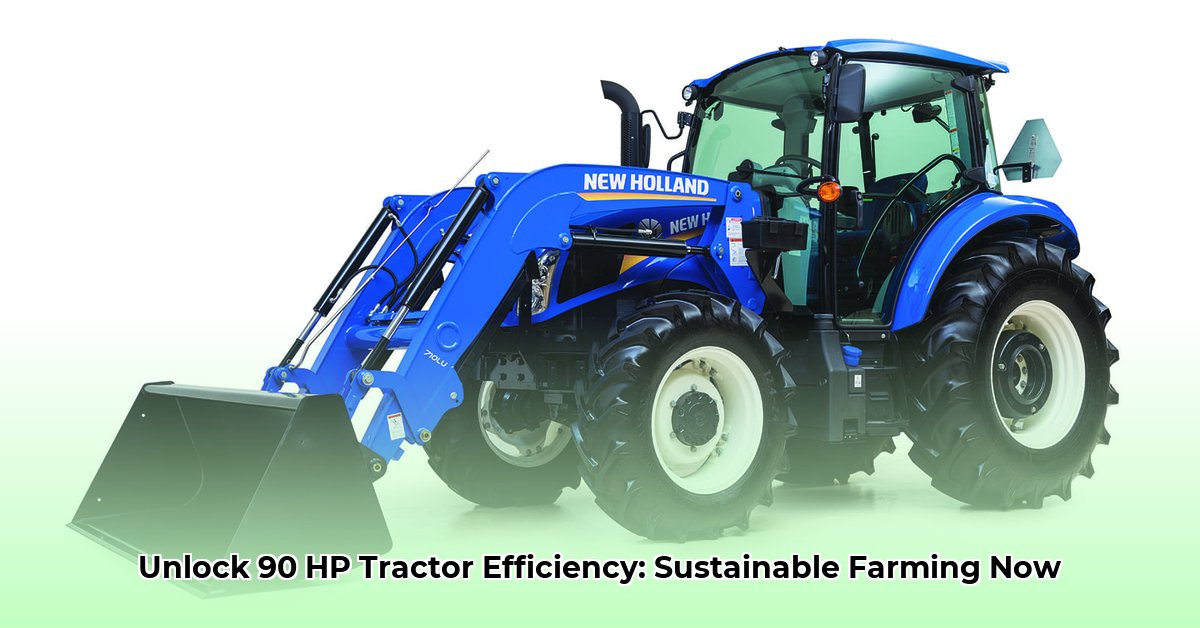
90 Horsepower Tractor: Fueling a Sustainable Future with the John Deere 5090E (and the Mystery of the 5090M)
The agricultural sector faces increasing pressure to adopt sustainable practices. Efficient, low-emission machinery plays a crucial role in this transition. The John Deere 5090E, a 90-horsepower utility tractor, represents a step towards this goal. However, a significant information gap surrounds its counterpart, the 5090M, highlighting a need for greater transparency within the industry. This analysis examines the available data for the 5090E and exposes the concerning lack of information for the 5090M, providing actionable intelligence for farmers, John Deere, and policymakers. For comparison, see data on a similar higher-horsepower tractor here.
Getting to Know the John Deere 5090E: Power and Planet
The John Deere 5090E boasts FT4 emissions compliance (meeting Tier 4 emission standards, resulting in significantly reduced harmful exhaust). This translates to environmental benefits and potential cost savings through reduced taxes or increased government subsidies. While fuel efficiency is a key selling point, specific data remains elusive. Anecdotal evidence suggests strong performance, yet independent verification is needed for a complete assessment. This lack of readily available, precise fuel consumption figures hinders a thorough evaluation of its long-term economic viability.
The 5090E offers customizable cab options (open, standard, and premium), catering to diverse climates and operator preferences. The availability of a 1000 RPM PTO (power take-off – a mechanism for powering external implements) enhances its versatility, supporting a wider range of farming operations and potentially boosting overall farm productivity. However, comprehensive data on the cost-effectiveness of these features is still needed. Do the potential increased efficiency gains outweigh the higher initial equipment purchase price?
The 5090M: A Case of Missing Information
Information regarding the John Deere 5090M is strikingly limited. Critical specifications – engine type, transmission details, PTO options, and precise emission standards – remain undisclosed. This lack of transparency prevents a meaningful comparison between the 5090E and 5090M, hindering informed decision-making for farmers. This information void raises concerns about potential cost advantages or performance differences between the models. Complete transparency from John Deere is crucial to rectify this situation.
Actionable Intelligence: Steps for Farmers, John Deere, and Policymakers
Addressing the information gap requires a multi-faceted approach. The following actions are crucial for stakeholders across the industry.
Farmers: Prioritize thorough research before purchasing. Seek independent reviews and compare pricing from multiple dealers. Consider long-term maintenance costs and parts availability. Explore financing options and government subsidies for fuel-efficient equipment.
John Deere: Publish comprehensive and easily accessible specifications for all tractor models. Conduct independent lifecycle assessments (LCAs) of its equipment, publicly disclosing the results. Invest in research and development of more sustainable technologies. Enhance marketing transparency to build trust.
Policymakers: Standardize sustainability metrics for agricultural equipment. Implement policies that incentivize the adoption of low-emission machinery (tax breaks, grants, etc.). Strengthen regulations regarding emissions and data transparency from manufacturers.
Isn't it concerning that such a critical piece of information is missing? The lack of data from John Deere severely limits the ability to perform a comprehensive lifecycle assessment of the 5090M, making it difficult to genuinely evaluate its contribution to sustainable farming.
Bridging the Data Gap: The Future of Sustainable Farming
The limited data on the 5090M underscores the broader need for greater transparency in the agricultural equipment industry. Farmers need complete information to make conscious environmental choices. Independent analysis and informed policy require readily available data points. The call for transparency extends beyond John Deere; it's a call for responsible practices throughout the industry.
Sustainable Power for a Sustainable Future
The demand for efficient, environmentally friendly tractors is increasing. Models like the John Deere 5090E offer a pathway to sustainable agriculture, but full transparency, robust independent testing, and collaborative efforts are vital. Access to reliable data, manufacturer transparency, and supportive policies are all essential components for creating a truly sustainable future in farming. The next generation of agricultural technology will be defined by openness and collaboration.